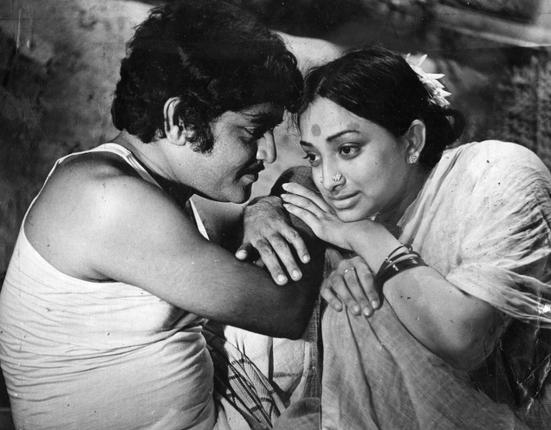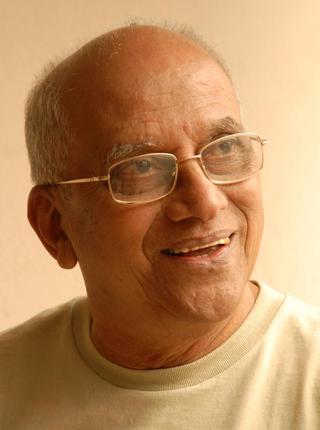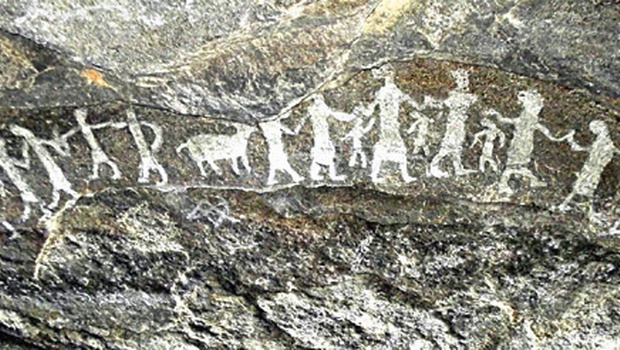Singeetam Srinivasa Rao remembers Dikkatra Parvathi, his first film in Tamil, based on Rajaji’s story
Singeetam Srinivasa Rao’s first film was in Telugu, a 1972 comedy named Neeti Nijayiti. It flopped. For his second film, he wanted to do something different. “At that time, there was this big art-cinema movement,” he told me last week. “We were very inspired by the neorealistic films, and by Satyajit Ray. That’s how Dikkatra Parvathi happened.”

Ray’s Pather Panchali had become the touchstone for young filmmakers, and Rao followed its lessons scrupulously. Because Ray’s film was scored by a classical musician (Ravi Shankar), Rao brought in the veena maestro Chitti Babu to compose the soundtrack for his film, which turned 40 this month. And because Ray’s film was based on a classic work of literature (by Bibhutibhushan Bandopadhyay), Rao too decided that his film would be based on a literary story that had fascinated him: Fatal Cart.
That was the English translation of C Rajagopalachari’s Dikkatra Parvathi. “Those days,” Rao told me, “it was easier to get funds from the Film Finance Corporation [the earlier avatar of the National Film Development Corporation] if your film was based on a classic.” He put in fifty thousand of his money, and the rest of the two-lakh budget came from FFC – Dikkatra Parvathi was the first Tamil film financed by the organisation.

Seeking further financial assistance, Rao decided to shoot the film someplace a little beyond the Tamil Nadu-Karnataka border, because the Karnataka government was offering subsidies (up to fifty thousand rupees) for films shot in the state. But when they discovered that Rajaji’s birthplace, Thorapalli, was just seven kilometres from Hosur, where the unit was camped, Rao’s wife convinced him that the film had to be shot there. “The village looked exactly like the one described in the story,” Rao said. “Plus, we got the satisfaction of shooting Rajaji’s story in Rajaji’s birthplace.”
Rao was hesitant, at first, to approach the 94-year-old Rajaji and take permission to film his story. “He hated films,” Rao said. “I wanted to make a film from a story of a man who hated films.” Later, Rajaji assured him that he only hated bad films. Rao remembers the day he met Rajaji: 7 December, 1972. “December 10 was his birthday and there would be a constant stream of visitors. So I went earlier.” Rajaji died soon after, on Christmas day, and the permission letter he gave Rao contained his last signature in an official capacity. More than a year later, his children attended the preview of Dikkatra Parvathi, which was “dedicated to the memory of Rajaji.”
The story is about newlyweds Parvathi (Lakshmi) and Karuppan (Srikanth), whose happy – if impoverished – life is ruined when he becomes an alcoholic and is unable to repay his loans. Two stretches stand out. The first occurs when Karuppan, goaded by a cohort, begins to drink. This is his first time. He asks, almost innocently, if drinking isn’t wrong and if you begin to smell if you drink. He takes his first sip and spits out the cheap liquor. The people around him laugh – we don’t see them (the camera stays focused on Karuppan), but we hear their mockery. And as if to prove a point to them, Karuppan drains the bottle.
This self-destructive male behaviour is balanced, towards the end, by self-destructive female behaviour. Parvathi is constantly hounded by a moneylender’s son (YG Mahendra) who is panting after her, and at one point, he enters her home when Karuppan is away. What happens next? We are kept in suspense, as the film cuts away to the aftermath: a court case. (Rao shot these scenes in a courthouse in Hosur, corralling local lawyers into the cast.) Over the song Enna kuttram seidheno, we get incremental flashbacks that lead us to the climax, where we learn what really occurred that night. It’s one of the rare times a Tamil-film heroine has been allowed to remain human.
Lakshmi was cast because Rao was impressed by the mobility in her face. “She was acting in a lot of ‘glamour roles’ then,” Rao said. “I saw her without makeup one day, and knew she was right for the role.” As for Srikanth, he was cast because he was not “the regular hero.” Dikkatra Parvathi was shot in 22 days by the cinematographer Ravi Varma, who had just finished work on a Malayalam film namedSwayamvaram, made by a first-time filmmaker named Adoor Gopalakrishnan. Rao said, “Adoor used to come by for the rerecording sessions of Dikkatra Parvathi.” The score, though, hasn’t aged well. Over the opening credits alone, we hear the veena, mridangam, morsing, tabla, shehnai, sarangi, flute – the resulting symphony, today, sounds too ostentatious for such a small, intimate film.
Dikkatra Parvathi was censored on December 31, 1973, but the film couldn’t be released due to an impasse. The FFC demanded repayment of their loan before they would issue the release letter, and the distributors insisted on the release letter before they coughed up the funds that would allow Rao to repay his loan to the FFC. When the director ran into MG Ramachandran, the Chief Minister, and spoke about his predicament, the latter instructed his secretary to buy the film.
This was the first time in the Indian film industry that a film was procured by a state – though MGR wasn’t exactly looking at it as a work of art. He had in mind other, more practical uses – as a propaganda film to further the cause of prohibition. Still, Dikkatra Parvathi was back in Rao’s hands. It was released in one theatre in Chennai, Little Anand. It would be almost a decade before he made his next Tamil feature, Rajapaarvai.
source: http://www.thehindu.com / The Hindu / Home> Features> MetroPlus / by Baradwaj Rangan / June 28th, 2014

